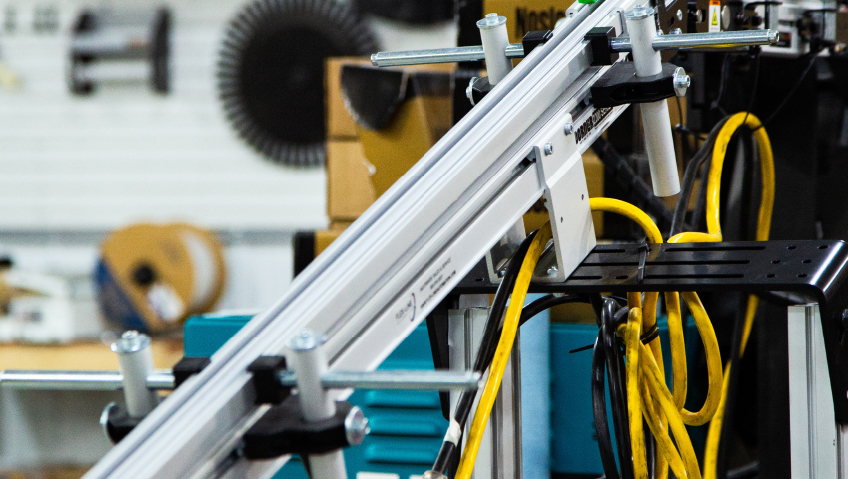Across North America, commercial property owners and businesses are wrestling with sustainability. On the one hand, there is being a good corporate citizen, implementing environmental strategies, and investing in technologies to reduce energy use; on the other, there is the need to remain profitable. There’s no denying the benefits stemming from cleaner energy, limiting greenhouse gases, and reducing waste, but no matter how well-intentioned, shrinking our carbon footprint often comes at a price.
At its core, sustainability is about using less. How many of us grew up with parents (apologies to all the dads) who scolded us for letting the faucet run while brushing our teeth instead of shutting it off or suggested—rather impolitely—we ‘put on a damn sweater!’ instead of turning up the thermostat? Likewise, leaving on the lights in an unattended room usually resulted in a lecture starting with, ‘Do you know how much our electric bill is every month?’
Fast-forward decades, and our parents are replaced by all levels of government. And although some of the ‘reduce energy’ lectures are about money, they are mainly about reducing our carbon footprint and saving the planet.
When basics became luxuries
Back in the ’70s, few of us worried about the essentials: water, food, and gasoline. Want a glass of water? Turn on the kitchen tap. Lawn looking a little dry? No problem. Put on the oscillating sprinkler for a few hours. And gasoline for massive, eight-cylinder cars? No issues. In America, a gallon of gas went up a mere two cents between 1969 and 1973, from 34 to 36 cents. All was good… that is, until the OPEC crisis, sometimes referred to as the Arab oil embargo.
Now relegated to history books, the October 1973 Arab-Israeli War saw Arab members of the Organization of Petroleum Exporting Countries (OPEC) introduce an embargo against the United States, South Africa, Portugal, and other nations in retaliation for America’s re-supplying Israel’s military. International relations were strained, along with supplies of oil. The price of oil almost quadrupled, from $2.90 USD a barrel to $11.65 USD in just a few months. Fuel was rationed, lack of supply was evident at the pumps, and the ripple effect kept on going. Gasoline prices between 1974 and 1975 skyrocketed from 39 cents per gallon to 53 cents, and kept on increasing. Only after months of negotiations did the embargo end in March 1974.
The OPEC crisis sent a clear message to North Americans: the days of dependence on cheap fuel were over, never to return. Many began questioning their massive, gas-guzzling vehicles. Almost overnight, mopeds—cycles with a small engine and pedals—were seen on city streets. Able to get over 100 miles (161 km) to the gallon, mopeds soon became best sellers as drivers realized how dependent they were on now-costly gasoline. Homeowners, paying more attention to their electricity and home heating bills, started exploring alternate sources of power, particularly solar energy.
Starting small
Today, it is impossible to discuss energy consumption without using words like “green” and “sustainable.” What was once the passion of environmental activists is now everyday conversation, especially in business.
There are many ways companies can reduce their carbon footprint. Some are modest, while others require massive investment. The simplest, and least costly, involves The Three R’s: reduce, reuse, and recycle. Many enterprises, such as manufacturing, generate waste, but that doesn’t mean companies have to be wasteful.
Even small things, like repairing office furniture instead of buying new, keeps desks and chairs out of landfill. Likewise, purchasing supplies and products from local providers in large quantities means less fuel used for transportation, reduced carbon emissions, and fewer trucks on the roads making multiple trips. Some initiatives, like replacing light switches with dimmers and swapping out older, inefficient lights for LEDs, require investment, but it is one that pays off in the long run.
Another way to reduce one’s carbon footprint is with ESG software. Short for Environmental, Social, and Governance, such software programs are designed to help businesses measure and monitor their carbon emissions and implement ways to improve sustainability.
And although the COVID-19 pandemic caused chaos, it also forced companies to re-think how to conduct business, with many adopting hybrid work. Working and taking meetings from home became popular, and for companies, off-site workers often mean less energy wasted, since there is no point having lights, heating, and air conditioning on in every office if no one is there.
Investing in efficiencies
For business and commercial property owners seriously considering investing in long-term solutions, there are many options, starting with energy audits. While there are various ways of approaching these audits through registered organizations, the goal is to evaluate, test, and make recommendations to improve efficiencies by revealing ways properties are wasting energy. Many larger businesses today have designated sustainability officers, who often lead a team focused on identifying carbon emissions and achieving reduction targets.
Businesses and commercial property owners seeking to reduce their environmental impact can take advantage of various subsidies, grants, and other incentives. Likewise, homeowners can tap into programs like the Canada Greener Homes Initiative for transformative products, like switching from oil to heat pump technology. The Canada Greener Homes Loan provides up to $40,000 in interest-free financing, depending on eligibility criteria, for pre-retrofit stage renovations.
Commercial property owners can search various energy efficiency incentives via the Natural Resources Canada website. Described as “an online inventory of programs to promote the efficient use or conservation of energy at the end-use level and/or of the use of alternative energy in Canada.” Along with searching through ENERGY STAR® Rebates, an Incentives Directory, and specific Energy Efficiency Programs for Industry, businesses and property owners can find programs covering awareness and information, financial incentives, research and development, new construction, rebates, and more.
In Canada, there are also incentives for businesses making clean tech investments to improve energy efficiency and reduce their environmental impact. Depending on the level of government, these can include tax credits, wage subsidies, loans, funding, opportunities for collaboration, and more. Canada’s federal government also provides over two dozen Environment and Climate Change funding programs. Depending on eligibility, recipients can sign up for emissions reduction advancement programs, zero plastic waste initiatives, and other programs.
In the United States, President Biden’s Federal Sustainability Plan addresses several environmental goals, including reducing U.S. greenhouse gas emissions by 50 to 52 percent (from 2005 levels) by 2030, and limiting global warming to 1.5 degrees Celsius. The aim is to support clean energy industries, foster a climate- and sustainability-focused workforce, create more climate-resilient infrastructure and operations, and other green initiatives. Depending on need, the Environmental Protection Agency (EPA) funds over $4 billion in grants and various assistance agreements.
For businesses big and small, much can be done to protect and preserve the environment. Basics like recycling, conserving and re-using water, adding insulation, and switching to energy-efficient lighting can be done without breaking the budget. And organizations who take up such initiatives will reap the benefits for years to come.






